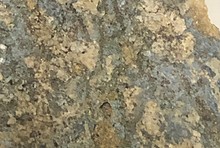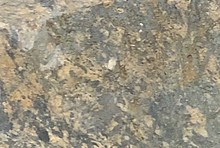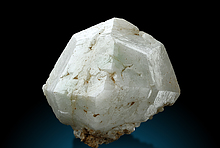Home PageAbout MindatThe Mindat ManualHistory of MindatCopyright StatusWho We AreContact UsAdvertise on Mindat
Donate to MindatCorporate SponsorshipSponsor a PageSponsored PagesMindat AdvertisersAdvertise on Mindat
Learning CenterWhat is a mineral?The most common minerals on earthInformation for EducatorsMindat ArticlesThe ElementsThe Rock H. Currier Digital LibraryGeologic Time
Minerals by PropertiesMinerals by ChemistryAdvanced Locality SearchRandom MineralRandom LocalitySearch by minIDLocalities Near MeSearch ArticlesSearch GlossaryMore Search Options
The Mindat ManualAdd a New PhotoRate PhotosLocality Edit ReportCoordinate Completion ReportAdd Glossary Item
Mining CompaniesStatisticsUsersMineral MuseumsClubs & OrganizationsMineral Shows & EventsThe Mindat DirectoryDevice SettingsThe Mineral Quiz
Photo SearchPhoto GalleriesSearch by ColorNew Photos TodayNew Photos YesterdayMembers' Photo GalleriesPast Photo of the Day GalleryPhotography
╳Discussions
💬 Home🔎 Search📅 LatestGroups
EducationOpen discussion area.Fakes & FraudsOpen discussion area.Field CollectingOpen discussion area.FossilsOpen discussion area.Gems and GemologyOpen discussion area.GeneralOpen discussion area.How to ContributeOpen discussion area.Identity HelpOpen discussion area.Improving Mindat.orgOpen discussion area.LocalitiesOpen discussion area.Lost and Stolen SpecimensOpen discussion area.MarketplaceOpen discussion area.MeteoritesOpen discussion area.Mindat ProductsOpen discussion area.Mineral ExchangesOpen discussion area.Mineral PhotographyOpen discussion area.Mineral ShowsOpen discussion area.Mineralogical ClassificationOpen discussion area.Mineralogy CourseOpen discussion area.MineralsOpen discussion area.Minerals and MuseumsOpen discussion area.PhotosOpen discussion area.Techniques for CollectorsOpen discussion area.The Rock H. Currier Digital LibraryOpen discussion area.UV MineralsOpen discussion area.Recent Images in Discussions
Techniques for CollectorsBlue Aventurine & Blue Quartz

26th Feb 2017 16:26 UTCSophiaJoy MB
What about Blue Aventurine? Some websites say the color cause of blue Aventurine is also Dumortierite, but geology.com says "Muscovite and ilmenite can produce blue, gray, or white aventurine."
So, how can I tell which is which? The hardness is about the same, isn't it?
If it is blue Aventurine, aventurescence has to be seen in the stone... Is it correct?
Thank you for your help!
27th Feb 2017 15:13 UTCDavid Von Bargen Manager
https://www.dmme.virginia.gov/dgmr/pdf/vamin/VAMIN_VOL27_NO02.PDF
http://www.minsocam.org/msa/collectors_corner/arc/qtzllano.htm
Cause is likely due to Rayleigh scattering (like why the sky is blue).

28th Feb 2017 23:41 UTCAlfredo Petrov Manager

1st Mar 2017 00:13 UTCLawrie Berthelsen (2)

1st Mar 2017 16:25 UTCSophiaJoy MB
The stone I'm confused about is like the one in the photo.
I thought I would attach a photo because I've read somewhere that "blue quartz" is not the best name to use...
So, a stone like the photo, is it blue Aventurine? (the photo is not mine)

1st Mar 2017 17:22 UTCAlfredo Petrov Manager

1st Mar 2017 17:48 UTCWayne Corwin

1st Mar 2017 18:20 UTCAlfredo Petrov Manager

1st Mar 2017 18:42 UTCWayne Corwin
I've seen some marble dyed with tydybowl that looke like that.

1st Mar 2017 18:45 UTCThomas Lühr Expert
-------------------------------------------------------
> Wayne, how would one go about dying parallel bands
> like that?
Because of a different porosity in a banded stone (e.g. quartzite) ?
To me look both specimens dyed too.
1st Mar 2017 20:11 UTCGregg Little 🌟
I think Alfredo is right. The first picture appears to be a sedimentary rock, probably quartzite (does it fizz?). The dye shows up the fine laminations defined by clay (probably detrital), finer in the upper section and coarser in the lower section. A close look shows the gentle pinching and swelling of the layers indicative of flaser bedding. The dying in this case varies due to the varying clay content.

1st Mar 2017 21:47 UTCLawrie Berthelsen (2)

2nd Mar 2017 08:47 UTCErik Vercammen Expert
2nd Mar 2017 23:07 UTCGregg Little 🌟
The transformation from sandstone is gradational and in a quartzite I would expect to see, on a granular level, a blurring of the grain contacts as the grains and cement re-crystallize to form an interlocking mosaic. Any sedimentary features would also fade and become indistinct. Bedding or foliation would be destroyed and the fracturing could be conchoidal.
There is a well known quartzite formation (approx. 2.2 billion years old) in Kilarney Park, Ontario which seems to bridge the definition. It was mined for metallurgical quartz due to its purity. Although it is very densely and very finely recrystallized, one can easily make out individual sand grains, sedimentary bedding and even ripple marks. Preserved textures of a sedimentary rock with mechanical features of a quartzite but the geological literature does describes it as a quartzite.

5th Mar 2017 08:52 UTCSophiaJoy MB
So, when I call this type of stone, I should call it "Quartzite." Is that right?




Mindat.org is an outreach project of the Hudson Institute of Mineralogy, a 501(c)(3) not-for-profit organization.
Copyright © mindat.org and the Hudson Institute of Mineralogy 1993-2024, except where stated. Most political location boundaries are © OpenStreetMap contributors. Mindat.org relies on the contributions of thousands of members and supporters. Founded in 2000 by Jolyon Ralph.
Privacy Policy - Terms & Conditions - Contact Us / DMCA issues - Report a bug/vulnerability Current server date and time: April 23, 2024 08:38:51
Copyright © mindat.org and the Hudson Institute of Mineralogy 1993-2024, except where stated. Most political location boundaries are © OpenStreetMap contributors. Mindat.org relies on the contributions of thousands of members and supporters. Founded in 2000 by Jolyon Ralph.
Privacy Policy - Terms & Conditions - Contact Us / DMCA issues - Report a bug/vulnerability Current server date and time: April 23, 2024 08:38:51













